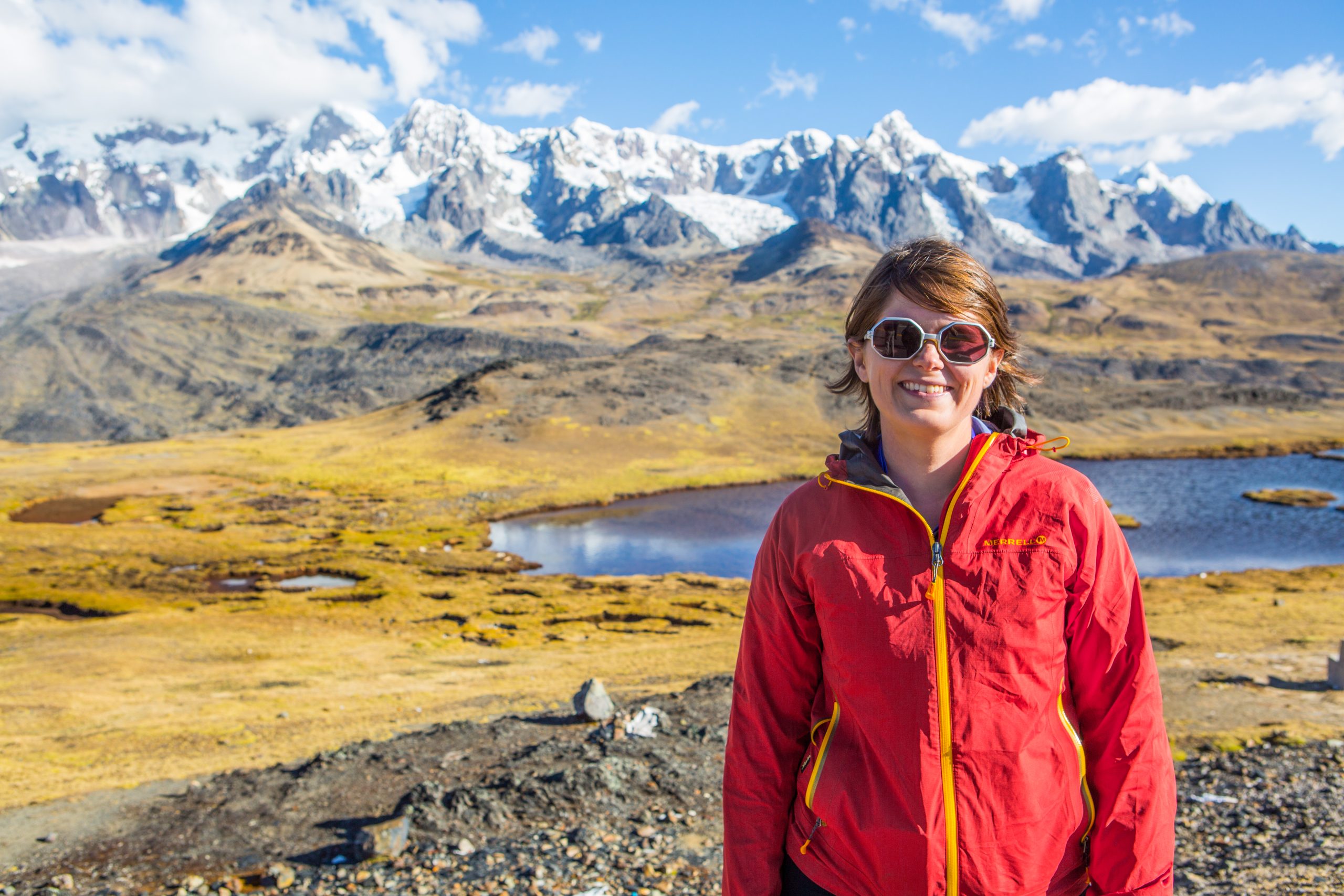
The western Amazon, which includes parts of Peru, Ecuador, Colombia, and Brazil, is one of the most biologically diverse areas in the world. The 6.7-million-square-kilometer [2.6-million-square-mile] region is home to 10 percent of the world’s known species.
What gave rise to the Amazon rainforest’s staggering biodiversity? Though scientists have posed compelling theories, a definitive answer remains elusive. Intrigued, science journalist Lizzie Wade, a contributing correspondent for Science based in Mexico City, tagged along with scientists who are trying to gather enough data to pinpoint the event that millions of years ago spurred the evolution of so many different species.
The resulting feature, “Cradle of Life,” published in Science in October 2015, explores the two prevailing theories that could explain the Amazon’s rich tapestry of species. The dominant theory, called the marine-incursion theory, holds that a big inland rush of the Caribbean Sea, ending less than 10 million years ago, created a vast wetland that eventually evolved into the Amazon rainforest. The other theory, known as the river theory, argues that the die was cast much earlier—that the rise of the Andes Mountains beginning around 65 million years ago fed freshwater rivers and created the perfect conditions for a major speciation event.
To get an up-close understanding of the debate, Wade and the scientists she accompanied trekked through the Peruvian Amazon on a grueling 10-hour hike, crossing three different ecosystems and many microclimates to collect samples from sediment layers that might, along with the genomic data contained in and ancient trees there, offer clues to the region’s past and show which of the two theories is most plausible.
Wade’s astute reporting, which drew on more than 14 sources, and her vivid writing brought the debate to life through a compelling narrative that earned her the American Geophysical Union’s 2016 Walter Sullivan Award for Excellence in Science Journalism.
Here, Wade tells Rodrigo Pérez Ortega about her experience reporting and writing her award-winning story. (This interview has been edited for length and clarity.)
How did you first learn about the debate on the origin of Amazonian biodiversity?
When I was an intern at Science in 2013, I wrote a story about a project at a couple of museums—the American Museum of Natural History in New York among them—that involved some Brazilian scientists. They were trying to go through their collections and map where everything had come from. That was to try to dig into the data a little deeper of what are the drivers of evolution in the Amazon, because it’s the most biodiverse place in the world and nobody really knows why. Through reporting that story I found out that it was a much bigger debate than I had anticipated and wanted to do more than that story.
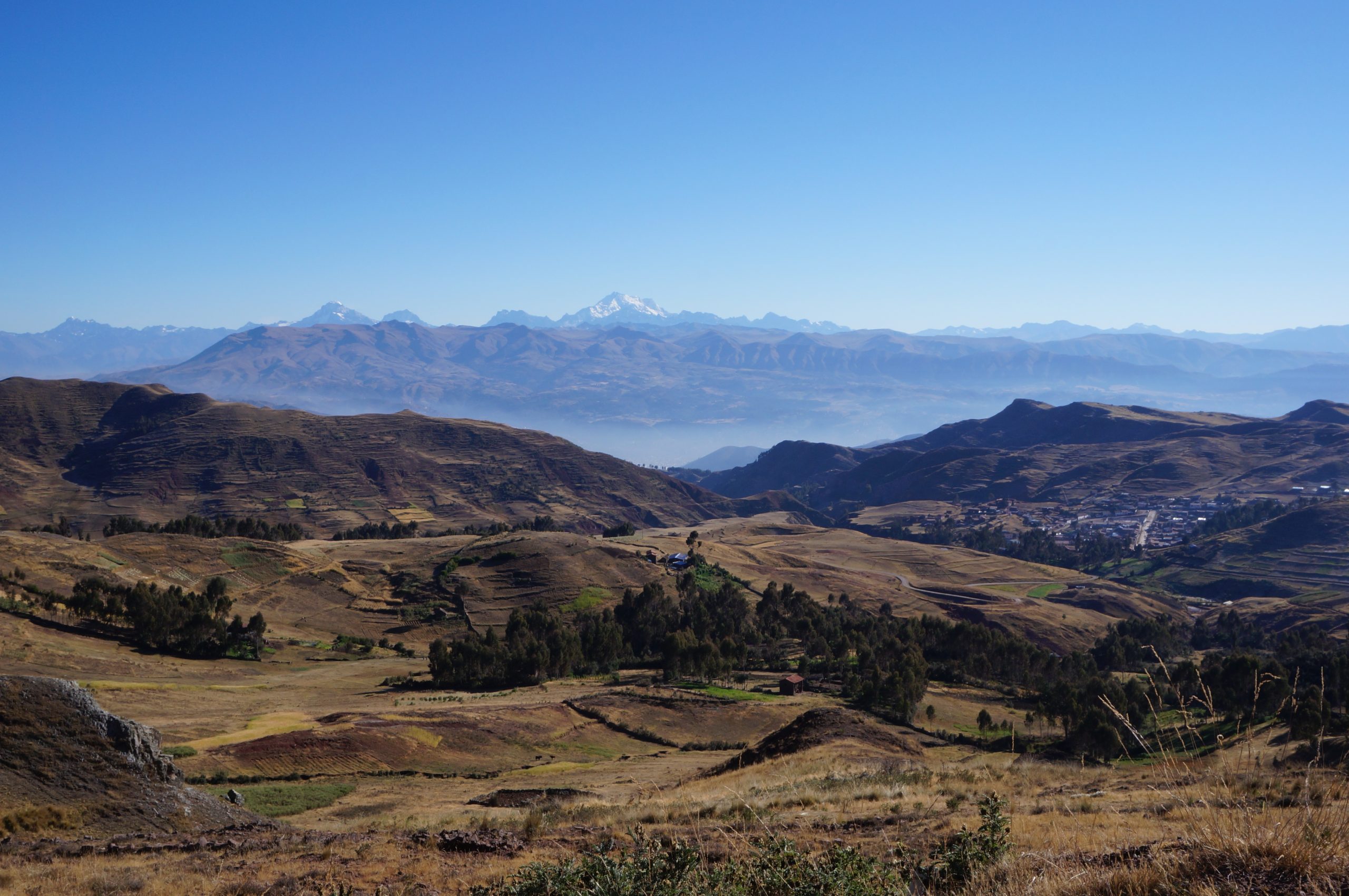
Latin America is often overlooked in science journalism. How did you pitch the story to Science?
I was already the Latin American correspondent, so it was a little bit easier—I was supposed to be looking for stories from Latin America. I think what was really key, especially for [pitching] the story and the length of it, including a lot of field reporting and a big trip—we were there for over two weeks—was that this debate was really intense. There were two completely separate stories about what led to the biodiversity in the Amazon, so I had already talked to a few people on both sides and I had a very good sense of what each side was saying.
I hadn’t really done a story like that before, although it’s obviously a classic in science journalism: the two sides, where each one thinks that the other one is completely wrong. For narratives you need tension, you need something to change, you need there to be some friction in the story itself—so it was these interviews and the reporting I had done previously, and starting to lay out what these two visions were, that helped me see that this debate was quite intense and had really strong scientists on both sides of it.
You went on this big field trip with scientists to the Andes in Peru. How did you learn about the trip and get the go-ahead to join them?
When I was doing another interview with a geologist named Paul Baker for another regular news story, he mentioned that he was planning this trip to the Andes and the Amazon to look into the science behind what are the drivers of evolution back in deep time in the Amazon. I just asked, “Could I go?” and it worked out.
People starting out (and me, too) wonder how writers come up with their ideas, and this one took years: two years from the time that I found out about it to the time I went to the field, and even longer to the time it was published. Some stories are worth waiting for, and you have to wait for the right thing. It really just happened because I happened to ask what else this guy was working on, in an interview about something completely different, so it was quite serendipitous and lucky. Those things don’t happen right away—you have to be doing this for a while to have those experiences, but the more you do it, the more they happen. I recommend having that in mind when you’re thinking about what kinds of feature stories you want to pitch, since they can often take a long time to gestate and find the perfect expression of them. I think this story taught me the value of being patient and not rushing into a story that I wasn’t quite sure how to tell; and then it suddenly became clear exactly how I was going to tell it and I got to go to the Amazon. So it was really a great experience.
Given that the question of how Amazonian biodiversity arose is the subject of fierce debate, did you encounter any challenges in talking with scientists on both sides of that debate—the “marine-incursion team” and the “river team”?
I think that when you hear the word “debate,” you think it’s a personal argument, and in science it’s not really like that. All of these people know each other and have for years, and I assume many of them like each other, but they think that the evidence says completely different things. So, I think debates in science can be emotionally easier to report on than big disagreements in other fields that might be more personal or have more behind them, such as politics or culture. A scientific debate is pretty straightforward—this is their job, and this is how they interpret the evidence, and you’re not the first person to drill them on how they know what they know, so that was pretty easy. And because the two sides were so clear, it was pretty easy to delineate which was which.
How did you manage to balance them in the story?
I was kind of worried that I would end up slanted, solely because I went on the trip with one team—I was with these people for two weeks, seeing the environment through their eyes, and I didn’t do that with the people from the other side.
The marine-incursion team have published more papers, and they have a book. And I went with the river team [because they were headed into the field]. I went to the field with the underdog team, but I did a lot of interviews with the more established team and there was more published material from them to draw on than the river team.

You had to hike through some tough terrain for this story. What was the physical experience of reporting it like?
I should say that the trip was really amazing and actually not really a difficulty. There were some hard hikes, for sure—I mean, the hardest hike of my life was down this cloud forest slope from 4,000 meters to 1,500 meters [13,000 feet to 5,000 feet]. It took like 12 hours. I don’t do stuff like that a lot. I mean, I’ve hiked, I’ve backpacked … but geologists are professional hikers, which I didn’t realize until I was in the middle of this hike!
[During] the hike in the Andes, I walked with someone and talked about what we were seeing, their background, and I thought that’s how it was going to be. But after an hour I was like, “There’s no way I can continue taking notes or even thinking of questions to ask.” It was extremely slippery because it was quite wet. We were going down, and you think at the beginning that it’s downhill so it’s going to be easy. But it was very not easy. These geology grad students were literally running. By the middle of the day I would pull out my notebook occasionally, but I was not heavily taking notes, and then when we finally made it to where we were staying that night, I wrote down what happened.
Besides this experience with the scientist who saved you from falling off the cliff, how was your interaction with the scientists during the trip?
Something that was kind of unique about this trip is that there were a lot of grad students there and it was very multidisciplinary. There were ecologists, there were geneticists and geologists, and they themselves were kind of figuring out how to put together their own visions about the Amazon, its past, and also trying to help each other to understand how each field works. [They were asking] what are these geological epochs, what are the names, how do you know how old a mountain is—kind of basic questions. And because they were asking each other all the time, it was a great environment to do interviews—basically, my interviews were often done for me and I just had to sit there and listen.
Did you ever worry that developing such close relationships with the scientists could make you biased in reporting on their work?
I don’t think so—but that’s because I am vigilant about the possibility. I was worried about developing a bias even before I went into the field, as we talked about—I was going to spend a ton of time with the people on one side of the debate, so I knew I was going to have to work extra hard to make sure I understood the other side just as well and was able to give it similar color. I’m sure I’d take a similar approach if I were reporting on these scientists’ work now. Journalists should always report against their biases, and the first step is to be honest with yourself about what those biases might be. But in the end I think the trust you are able to build with a source while in the field—or even just interviewing them again and again over the course of years on a particular beat—can be personally enjoyable as well as professionally rewarding.

You’re bilingual—you speak Spanish fluently. How did this help you in the field in Peru?
This time there was not much Spanish. Most of these scientists were from the U.S. I don’t like all my stories to be like that—I try to find Latin American scientists who are doing things. There were several Latin American grad students on the trip, so I talked with them, but they also spoke English perfectly well. One of the grad students who was there, he has been on this cloud forest trail measuring trees like a zillion times and he was really amazing. Sometimes you’ll hire journalists as fixers and he served that role when it was necessary.
What strategies did you use while reporting in the field for this story?
I would write in my notebook, [and] I recorded sometimes, when it was a sit-down interview situation where there were lots of data or a deep conversation over dinner. But I felt that if I recorded all the time in the field, I would come back with too much stuff that’s not useful. So every day I’d try to write down one scene that I had seen. When I came back [to Mexico] I had seven or ten or twelve little narratives of things that I had seen.
I knew I wanted a big part to be what it’s like to be there. For example, there is a part of the story [where] we walked to a fossilized tree. It’s a very evocative piece of evidence that the Andes used to be much lower, because you’re in this grassland and there’s this huge tree in front of you, and it’s obvious that these things don’t grow there anymore.
Once I got back to my desk and was able to put the whole trip in context, it was pretty clear to me which scenes were the most vivid and represented some crucial piece of information—hiking to the fossil tree, for example, or examining the sediment patterns on the outcrop. I wanted a mix of geology and biology/ecology scenes. I thought about what had to be in each information-heavy section and then figured out which scene contained some of that necessary information within it—or at least led naturally to it.
You went in knowing the debate probably wouldn’t be resolved during that trip. What challenges did that pose while you were in the field?
Field reporting can be difficult because a lot of it is just sample collecting and a lot of the actual knowledge is produced when [scientists] analyze the evidence [they] collected in the lab later. So when you’re in the field you can describe what they think it is, what questions they think are interesting, but there’s not a lot of amazing moments in it or really even discovery—the scientists themselves often don’t know what they’ve found yet.
If your story is structured as a mystery, as so many scientific-discovery stories are, it’s really hard to pull off a satisfying ending without the resolution of a definitive answer. I knew the mystery of the Amazon’s evolution wouldn’t be solved while I was writing my piece. So I didn’t frame it as a mystery, but rather as a debate—or maybe it still is a mystery, but with two equally plausible resolutions. The research and the arguments have been going on long enough that there is plenty of evidence on both sides that has been through analysis, peer review, and publication. So I could lean on that material in addition to the fascinating but still scientifically inconclusive color that I was collecting during my reporting.
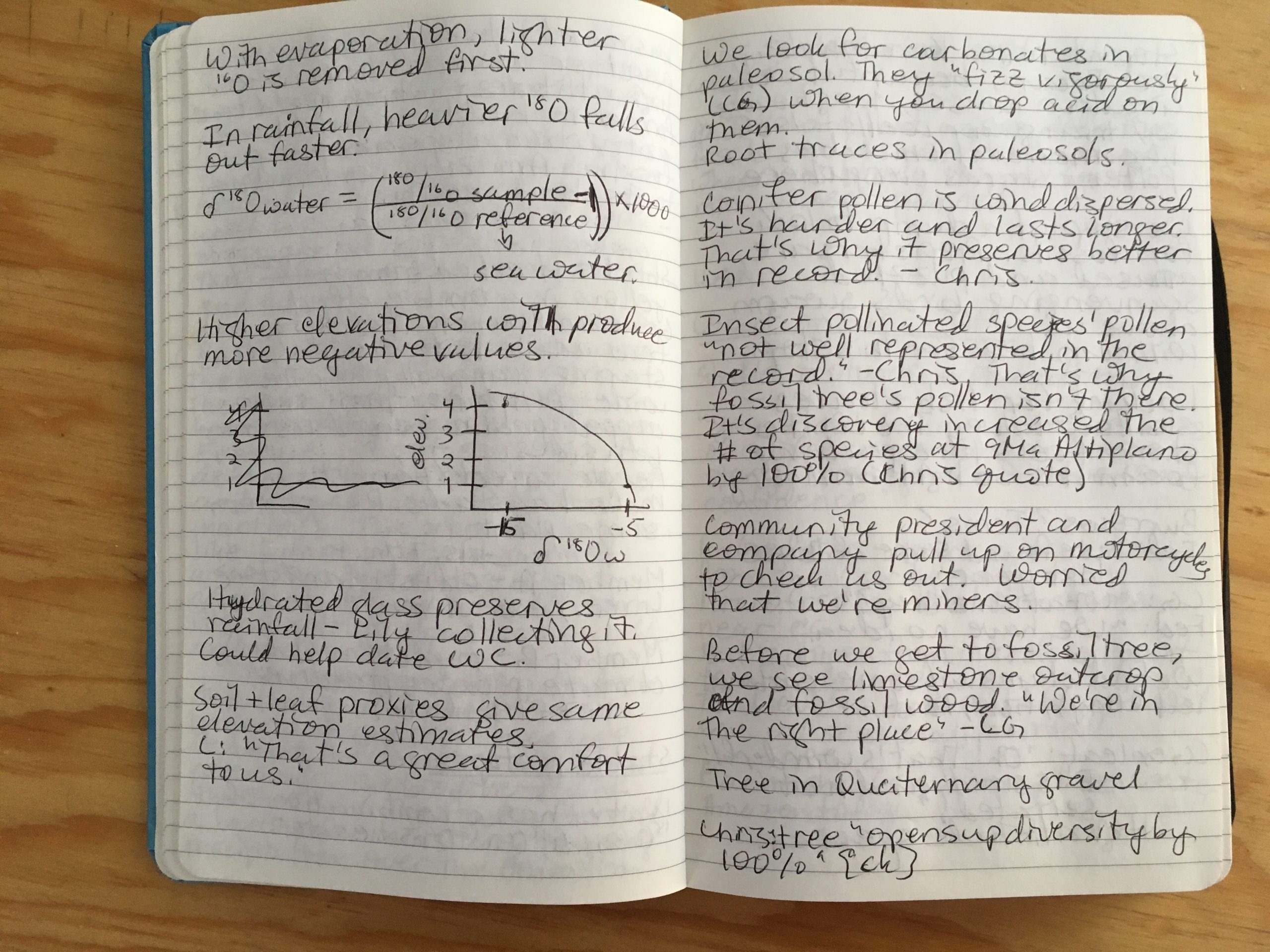
The narrative structure of your story is outstandingly compelling. Once you had all your reporting material, how did you figure out the structure of the story?
I knew the general structure would be a scene-based introduction, and I knew I would need some background on why this is interesting and what people used to think about the [evolution of the] Amazon. Basically, until the ’90s, people thought they knew exactly how it happened, but it turned out that they didn’t know anything, which is par for the course of science. And then I knew I had to lay out one side and have you convinced at the end of that section that “Oh, yeah. That makes perfect sense, that’s how it happened.” And then the next section would undercut that and be like, “Or … it could have happened a completely different way.” I love the stories where you finish half of it and you think, “Oh, this makes perfect sense, what a beautiful story,” and then it’s totally overturned in the second half in an equally compelling way. And then [I needed] some kind of conclusion and looking at how you could figure this out, and future projects that may help.
I had that structure, and then I tried to fit the scenes that I had written in the field and see which ones worked the best. [But] the writing of this trip and [writing about] the debate was really hard. It’s hard to feel that you have a satisfying narrative when they haven’t solved it.
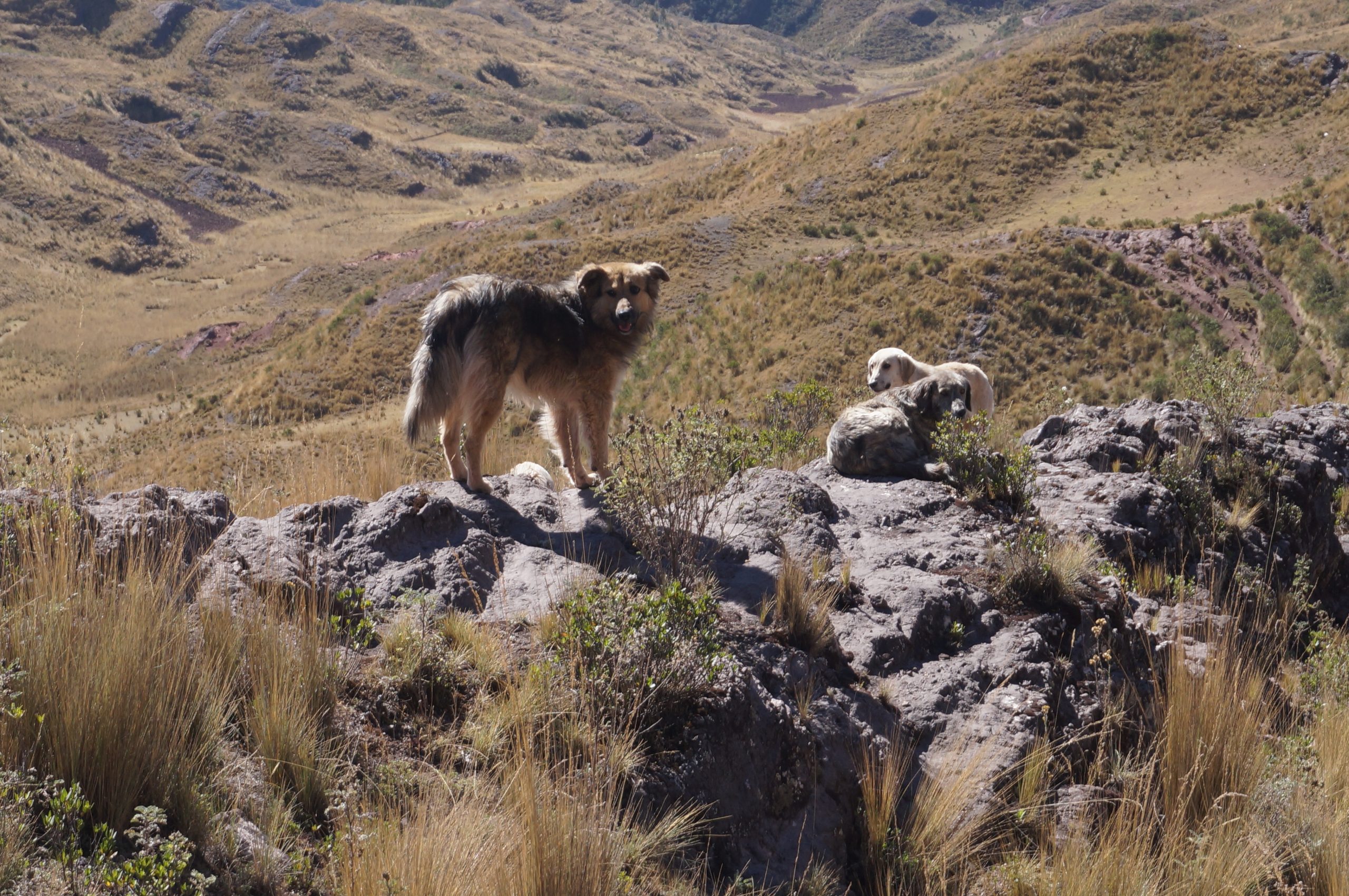
What changed during the editing process?
It was long. The feature process is long.
In science reporting it’s always a challenge. After you’ve personally digested a huge amount of information and tried to synthesize it on the page, it’s hard to remember what other people know and what they don’t know, and how much [context] you need to have in the story, and what is totally obvious and what you have to leave out.
The first draft focused more on the trip and trying to place it geographically. Latin America is often an overlooked region and it was a challenge to make people know physically where I was. I think my early drafts included more scenes than the final version. I focused much more on the journey, and then I went back in and had to add more concrete things that would bring it down to earth—more references to different studies. So it became more concrete and fleshed out scientifically as it went. I think if I hadn’t done this trip, it would have been very obvious which studies go where, but because there were these two threads, I had to get one out of my system and then slowly add in the other one.
You talked to a lot of “ists”—sedimentologists, evolutionary biologists, geologists, paleontologists, paleoclimatologists, ornithologists, and botanists. That’s a lot of sources. Was your intention to show how many people and fields of science are involved in this debate?
Yes. There was a lot of “Where do we need more information? Who studies what? Do we need to know more about the paleontology or more about the current marine life? Who has done interesting studies on each one?”
This was really [about] two competing teams of people, so it was important to be able to show all the fields of science that you can draw on and also that there are a lot of people on both sides—neither one was the pet idea of one person. And there are actually some people who’ve changed from one side to the other, which didn’t really go in the story either because that would be more like a personal narrative, and it was more [about] taking the reader on that kind of journey themselves.
You recently won the American Geophysical Union’s Walter Sullivan Award for Excellence in Science Journalism. Congratulations! What do you think made this feature an award-winning one?
Thanks! That’s mostly for the committee to say, I guess, but I think it was the surprising way of looking at the Amazon. The driving question of the feature is: Why is it so biodiverse? So much of this is about the past of the Amazon. I think that made it stand out from other stories about rainforests. It’s not the wonder of what it’s currently like—it’s the wonder of what it used to be like.
I think this award was mostly judged by scientists, and I hope they felt it was a good reflection of the way that science really works—that there’s a lot of uncertainty and the same evidence can be interpreted in different ways, sometimes depending on the methods you use, sometimes depending on the questions you’re asking. Usually, it’s a team effort, there’s lots of mystery, things don’t get resolved. At the end there’s not a clear answer, and I hope that my story reflected that reality of doing science and trying to figure out how to interpret evidence.
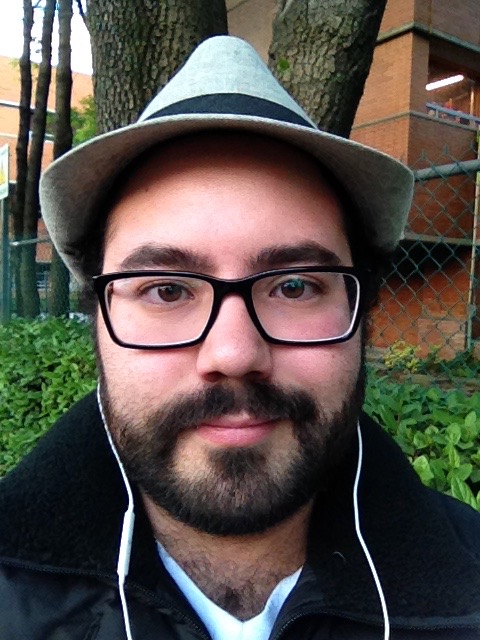
Rodrigo Pérez Ortega is a TON fellow sponsored by the Burroughs Wellcome Fund. He is a freelance science writer from Mexico City. He’s passionate about neuroscience and health journalism, and has been a contributor at TecReview, Medscape en Español, ¿cómo ves?, and others. His work has been published in English and Spanish, and he works continuously to raise awareness about science and science journalism in Latin America. Follow him on Twitter @rpocisv.


